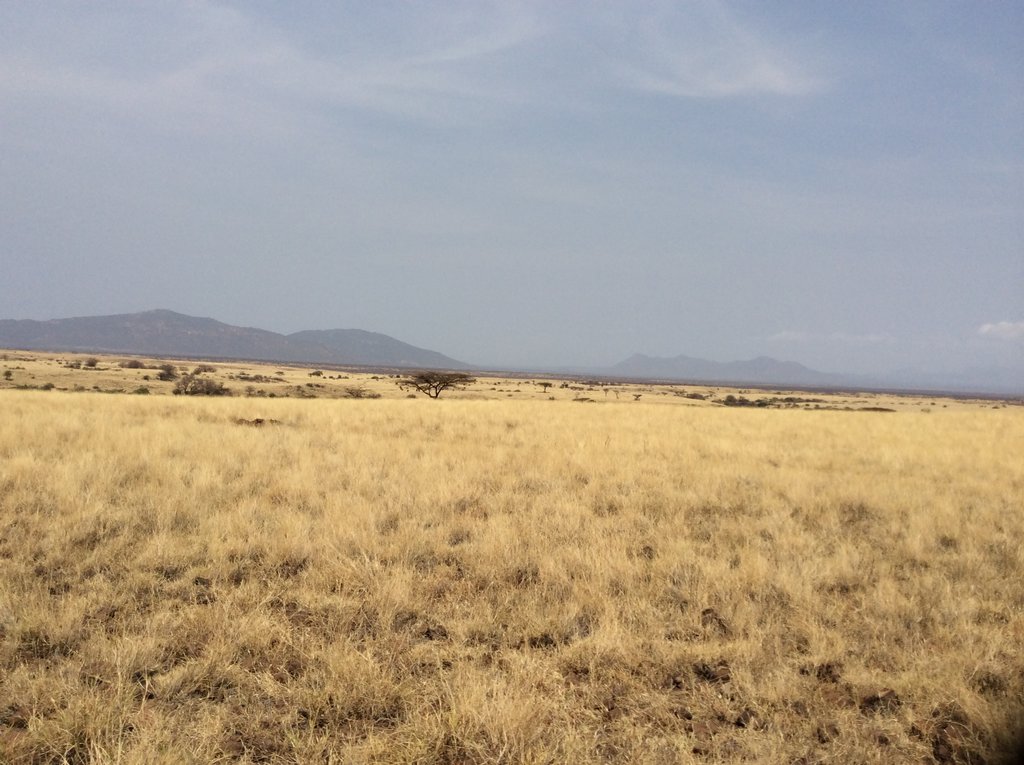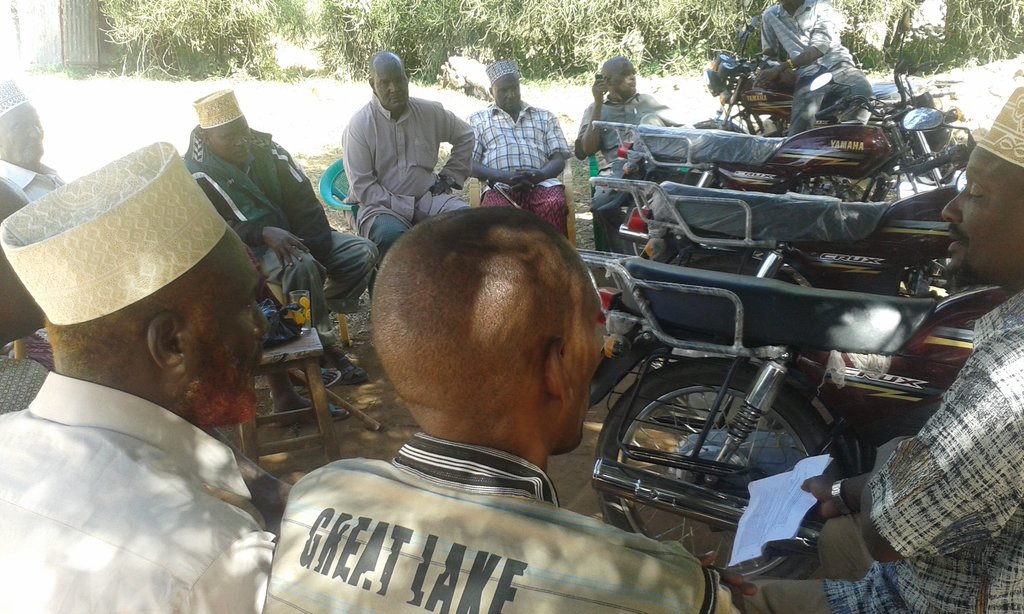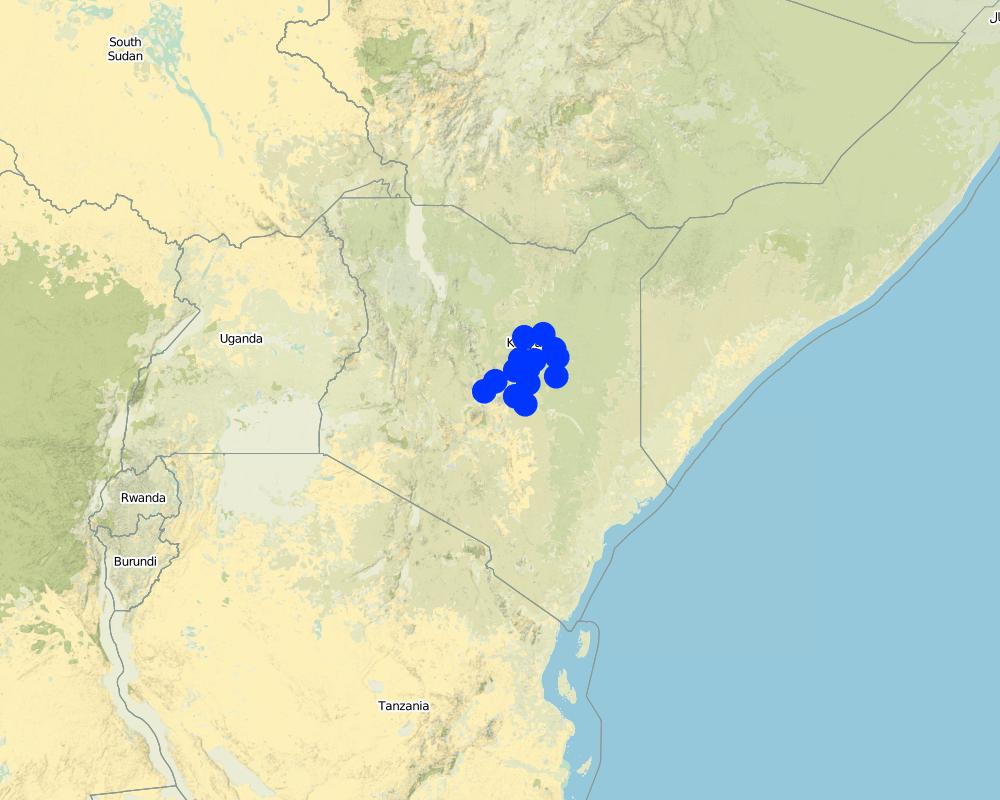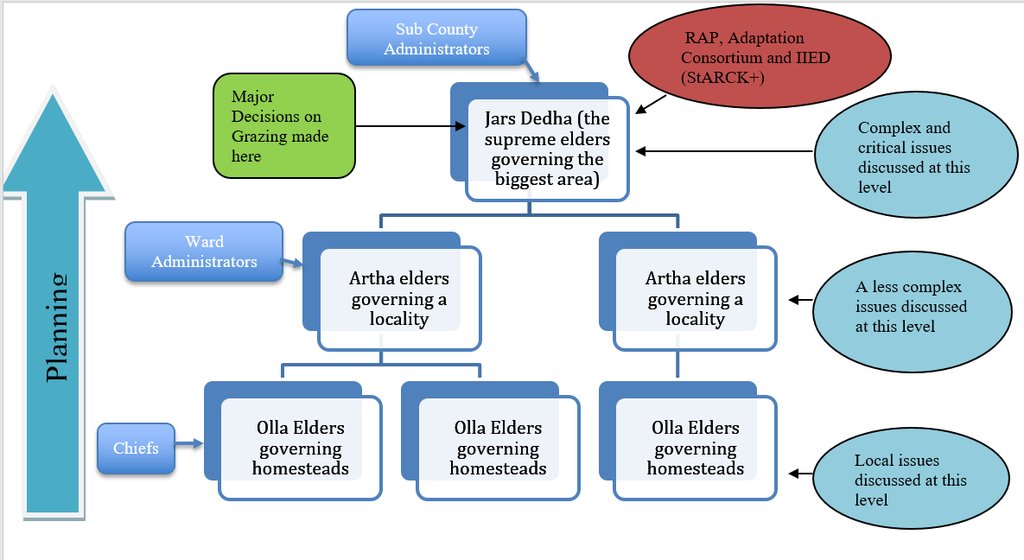Empowering Dedha institutions in governing the natural resources of Isiolo rangelands [Kenia]
- Creación:
- Actualización:
- Compilador: IBRAHIM JARSO
- Editor: Caroline King-Okumu
- Revisores: Rima Mekdaschi Studer, Donia Mühlematter
Jars Dedha
approaches_3345 - Kenia
- Resumen completo en PDF
- Resumen completo en PDF para imprimir
- Resumen completo en el navegador
- Resumen completo (sin formato)
- Empowering Dedha institutions in governing the natural resources of Isiolo rangelands: 13 de mayo de 2018 (inactive)
- Empowering Dedha institutions in governing the natural resources of Isiolo rangelands: 31 de julio de 2018 (inactive)
- Empowering Dedha institutions in governing the natural resources of Isiolo rangelands: 3 de septiembre de 2018 (inactive)
- Empowering Dedha institutions in governing the natural resources of Isiolo rangelands: 2 de noviembre de 2021 (public)
Visualizar secciones
Expandir todo Colapsar todos1. Información general
1.2 Detalles de contacto de las personas de referencia e instituciones involucradas en la evaluación y la documentación del Enfoque
Usuario de la tierra:
Boru Edin
+254 715 627 545
Kinna Dedha Elders
Kinna town, Kinna Ward, Isiolo County.
Kenia
Non-State Actor:
Jama Abdiaziz
+254 707 720 577
aziz2012ke@gmail.com
Pastoralist Capacity Development Programme (PACDEP)
Isiolo Town, Kenya
Kenia
Usuario de la tierra:
Diba Rukia
+254 728 643 044
Ward Adaptation Planning Committee
Kinna, Isiolo County
Kenia
Especialista MST:
Nombre del proyecto que facilitó la documentación/ evaluación del Enfoque (si fuera relevante)
Strengthening Adaptation and Resilience to Climate Change in Kenya Plus (StARCK+)Nombre de la(s) institución(es) que facilitaron la documentación/ evaluación del Enfoque si fuera relevante)
Resource Advocacy Programme (RAP) - Kenia1.3 Condiciones referidas al uso de datos documentados mediante WOCAT
¿Cuándo se compilaron los datos (en el campo)?
03/11/2017
El compilador y la/s persona(s) de referencia claves aceptan las condiciones acerca del uso de los datos documentados mediante WOCAT :
Sí
2. Descripción del Enfoque MST
2.1 Breve descripción del Enfoque
This approach – driven by communities and supported by various agencies - aims to revive and strengthen the traditional natural resource management institutions of Boran pastoralists in Northern Kenya. The traditional system, which was devised by the Boran pastoral community and honed over centuries to suit the challenges of the rangelands, has been steadily eroded by external factors and formalised systems after the emergence of the nation-state.
2.2 Descripción detallada del Enfoque MST
Descripción detallada del Enfoque MST:
Pastoral Community Members together with the Jarsa Dedha (the council of elders who control the use of grazing land and its resources) are at the forefront of reinvigorating traditions of rangeland management. To achieve this, they have been supported by organizations including the Ward Adaptation Planning Committees (WAPC), the Resource Advocacy Programme (RAP) and the International Institute for Environment and Development (IIED). There has been a focus on reviving traditional institutions and systems of managing of natural resources to help communities adapt to climate change.
One specific project that has assisted the re-empowerment of the Dedha institutions was StARCK+ (funded by DfID). StARCK+ was founded on an understanding and an appreciation of the traditional natural resource governance of the Boran pastoral community. Responding to participatory demand it undertook to help strengthen this customary natural resource management system. Various agencies have also conducted research on the traditional institution and investigated how it could be improved. These include IIED, (UK), the University of Nairobi, (Kenya) and the University of Sussex (UK).
The Jarsa Dedha is an indigenous institution, through which customary laws and provisions guide the management of natural resources. The Boran of Isiolo County, Kenya, like their kin in southern Ethiopia, derive their customary laws from an overall supreme general assembly called the Gadha. The Gadha governing council preserves traditional laws and codes of conduct, as well as issuing amendments and additions based on the evolving environmental, social and cultural context. The Gadha system has a set of laws and provisions (seere), customs and culture (aada), and norms and values that govern society.
The recognition and observance of seere and aada are still considered vital for the wellbeing of the community, and the Gadha Council remains a legitimate institution in the eyes of Borana society. However, adherence to these laws is declining and the power of Borana customary institutions to enforce regulations is being undermined in a number of ways.
The reasons for weakening traditional institutions are basically poor recognition by the county and national government, and non-compliance with the rules due to changing socio-cultural norms. The council of elders that govern grazing resources, the Jarsa Dedha, which is the custodian of these unwritten rules and regulations locally, no longer has sufficient capacity or authority to enforce them as it had done prior to colonial rule. With climate change, pasture and water supplies are becoming scarcer and there is no other better way to govern land than the traditional system: that is why reviving, strengthening and improving the system was much welcomed through the advent of the StARCK+ project and the initiatives and support that have followed.
Looking towards the future, the rules of governing natural resources have been collected and formed into a draft county customary natural resource governance bill. This, if passed by the County Assembly, would represent a very significant step, by legitimising the traditional system of rangeland management through the Jarsa Dedha.
2.3 Fotos del Enfoque
2.4 Videos del Enfoque
Comentarios, descripción breve:
The video clearly defines the technology and the approach
Fecha:
20/02/2015
Lugar:
Garbatulla Area
Nombre del videógrafo:
Hilda Kathure
2.5 País/ región/ lugares donde el Enfoque fue aplicado
País:
Kenia
Región/ Estado/ Provincia:
Isiolo
Especifique más el lugar :
Pastoral areas of Isiolo
Map
×2.6 Fechas de inicio y conclusión del Enfoque
Indique año del inicio:
2012
Si no se conoce el año preciso, indique la fecha aproximada en la que se inició el Enfoque:
hace menos de 10 años (recientemente)
Comentarios:
The project started 2012 and ended 2016 but the approach is still continuing
2.7 Tipo de Enfoque
- tradicional/ local
2.8 Propósitos/ objetivos principales del Enfoque
The Approach is aimed at strenghthening and re-empowering the traditional institutions that govern rangeland management in the rangelands of Isiolo, in order to improve utilisation of natural resources and build community resilience to droughts and future environmental changes.
2.9 Condiciones que facilitan o impiden la implementación de la/s Tecnología/s aplicadas bajo el Enfoque
normas y valores sociales/ culturales/ religiosos
- facilitan
The approach was traditional and embedded in the culture of boran pastoralists and therefore easy to implement.
- impiden
The commercialization of livestock and its production like milk has made it difficult for elders to implement the approach.
disponibilidad/ acceso a recursos y servicios financieros
- facilitan
Communities make their own contributions to support implementation of the approach.
- impiden
No specific budget assigned by government authority for this approach: some funds from projects and county government and contributions from the pastoralists themselves.
entorno institucional
- facilitan
Well elaborated organizational design at all levels of institutional scale.
- impiden
Collision between the mandates of traditional structure and formal structure. This was addressed through accepting Chiefs as ex-official members in the Dedha council of elders.
colaboración/ coordinación de actores
- facilitan
Many NGOs and local organization support the implementation of the approach through providing means for surveillance such as vehicles or motorbikes. NGOs frequently also support Dedha assemblies that involve meetings of people from far away.
- impiden
Government and some NGOs sometimes establish parallel grazing committees.
marco de trabajo legal (tenencia de tierra, derechos de uso de tierra y agua)
- facilitan
Traditional tenure system.
- impiden
No legal papers for the ownership.
políticas
- facilitan
Traditional provisions and rules known by all community members.
- impiden
Traditional rules not known to everyone.
gobernanza de tierras (toma de decisiones, implementación y aplicación)
- facilitan
Elders make key decisions on governance of land.
- impiden
Women and youth not well involved in decision making although changes are happening nowadays to include them.
conocimiento de MST, acceso a apoyo técnico
- facilitan
Traditional skills much used.
- impiden
Little technical support.
mercados (para comprar insumos, vender productos) y precios
- facilitan
Ensures security and market thrives.
- impiden
The approach is more social and not market oriented.
carga de trabajo, disponibilidad de mano de obra
- facilitan
Youth provide man power Voluntarily.
- impiden
Volunteers sometimes don’t come out for work.
3. Participación y roles de las partes interesadas involucradas
3.1 Partes interesadas involucradas en el Enfoque y sus roles
- usuarios locales de tierras/ comunidades locales
Boran Community members, Dedha elders.
Agree on the pasture and water management approach and implement .
- organizaciones comunitarias
Ward Adaptation Planning Committees.
Implement community plans and fundraise for it.
- ONG
Resource Advocacy Programme (RAP), Merti Integrated Development Programme (MIDP), Pastoralist A Capacity Development E Programme (PACDEP), International Institute for Environment Development and Adaptation Consortium (ADA)
Support communities in implementing the approach.
Ward Adaptation Planning Committees; Implement community plans and fundraise for it.
Si varias partes interesadas estuvieron involucradas, indique la agencia principal:
WAPC , ADA and IIED
3.2 Involucramiento de los usuarios locales de tierras/ comunidades locales en las distintas fases del Enfoque
| Involucramiento de los usuarios locales de tierras/ comunidades locales | Especifique quién se involucró y describa las actividades | |
|---|---|---|
| iniciación/ motivación | interactivo | Pastoral Community Members, Dedha elders and supporting organizations like WAPC, RAP, IIED and DfID supported the process of reviving the traditional system of management of natural resources to help communities adapt to climate change. |
| planificación | interactivo | Pastoral Community Members and Dedha Elders to improve their systems of management of land and land-based resources. |
| implementación | interactivo | Dedha elders as they are tasked with ensuring that the natural resource governance system is successful. |
| monitoreo y evaluación | interactivo | Pastoralists and elders to keep those tasked are properly undertaking the responsibilities. |
3.3 Flujograma (si estuviera disponible)
Descripción:
The Dedha traditional system of managing resources has internal hierarchy at different levels i.e. Olla (homestead), Artha (locality) and Dedha (a large area). Although planning and minor decisions are made at local levels, major and binding decisions are agreed at Dedha level on grazing and management of pasture. Many NGOs and government actors engage the management system at Dedha level.
Autor:
Ibrahim Jarso
3.4 La toma de decisiones en la selección de Tecnología(s) MST
Especifique quién decidió la selección de las Tecnología/ Tecnologías a implementarse:
- todos los actores relevantes, como parte de un enfoque participativo
Explique:
The Participatory process is very essential in making the governance system work for pastoralists.
Especifique las bases que sustentaron la toma de decisiones:
- la experiencia personal y opiniones (no documentadas)
4. Apoyo técnico, fortalecimiento institucional y gestión del conocimiento
4.1 Construcción de capacidades / capacitación
¿Se proporcionó la capacitación a usuarios de tierras/ otras partes interesadas?
Sí
Especifique quién fue capacitado:
- usuarios de tierras
Si fuese relevante, también especifique género, edad, estatus, etnicidad, etc.
Largely elders but women and youth are also represented in the training.
Forma de capacitación:
- en el contexto de trabajo
- de agricultor a agricultor
- reuniones públicas
Temas avanzados:
Constitutional clauses supporting management of land through traditional institutions.
Need to legislate the local traditional rules to county laws. Participatory mapping of Natural Resources in the grazing areas to improve planning.
Comentarios:
Community members really participated in the processes and trainings and understood the contemporary issues.
4.2 Servicio de asesoría
¿Los usuarios de tierras tienen acceso a un servicio de asesoría?
Sí
Especifique si servicio proporcionado se realizó:
- en centros permanentes
Describa/ comentarios:
The pastoralist extension training sessions take place in Agricultural Training Centre in Isiolo Town. They are normally conducted once or twice a year because of financial constraints.
4.3 Fortalecimiento institucional (desarrollo institucional)
¿Se establecieron o fortalecieron instituciones mediante el Enfoque?
- sí, mucho
Especifique el nivel o los niveles en los que se fortalecieron o establecieron las instituciones:
- local
Describa la institución, roles y responsabilidades, miembros, etc.
The Dedha institution has been strengthened as they were enabled to undertake their responsibilities better.
Especifique el tipo de apoyo:
- equipo
- Their meetings were supported and made frequent and increased reach.
Proporcione detalles adicionales:
Provided with materials like motorbikes.
4.4 Monitoreo y evaluación
¿El monitoreo y la evaluación forman parte del Enfoque?
Sí
Comentarios:
This is a traditional approach and it is effectively self-monitored for learning and improvement.
Si respondió que sí, ¿la documentación se utilizará para monitoreo y evaluación?
Sí
4.5 Investigación
¿La investigación formó parte del Enfoque?
Sí
Especifique los temas:
- sociología
- economía/ marketing
- ecología
- tecnología
Proporcione detalles adicionales e indique quién hizo la investigación:
Various institutions have conducted research on the traditional institution and investigated how it could be improved through strengthening and reviving it with new initiatives for improved governance of natural resources. The institutions are the International Institute for Environment and Development, (UK), the University of Nairobi, (Kenya) and the University of Sussex (UK).
5. Financiamiento y apoyo material externo
5.1 Presupuesto anual para el componente MST del Enfoque
Comentarios (ej. fuentes principales de financiamiento/ donantes principales):
The traditional system is self sustaining and thrives through local contributions but no specific budget lines.
5.2 Apoyo financiero/material proporcionado a los usuarios de tierras
¿Los usuarios de tierras recibieron financiamiento/ apoyo material para implementar la Tecnología/ Tecnologías? :
No
5.3 Subsidios para insumos específicos (incluyendo mano de obra)
- ninguno
Si la mano de obra de usuarios de tierras fue un insumo sustancial, ¿fue:
- voluntario?
Comentarios:
The land users are pastoralists and surveillance of grazing reserves were undertaken to protect their pastures from irregular access. Dedha elders oversee the surveillance and health of rangelands.
5.4 Crédito
¿Se proporcionó crédito bajo el Enfoque para actividades MST?
No
5.5 Otros incentivos o instrumentos
¿Se usaron otros incentivos o instrumentos para promover la implementación de Tecnologías MST?
Sí
Si fuera el caso, especifique :
The rules of governing natural resources were collected and documented into a county customary natural resource governance bill.
6. Análisis de impacto y comentarios de conclusión
6.1 Impactos del Enfoque
¿El Enfoque empoderó a los usuarios locales de tierras, mejoró el involucramiento de las partes interesadas?
- No
- Sí, un poco
- Sí, moderadamente
- Sí, mucho
Strengthens community rights and ownership of their land.
¿El Enfoque facilitó la toma de decisiones basada en evidencia?
- No
- Sí, un poco
- Sí, moderadamente
- Sí, mucho
The Approach convened the community and identified the community challenges and worked on it with the support of Dedha elders.
¿El Enfoque ayudó a los usuarios de tierras a implementar y mantener Tecnologías MST?
- No
- Sí, un poco
- Sí, moderadamente
- Sí, mucho
Supported the essential activities of the traditional system and made it easy to implement.
¿El Enfoque mejoró la coordinación e implementación efectiva en costos de MST?
- No
- Sí, un poco
- Sí, moderadamente
- Sí, mucho
Improved coordination among the partners and made implementation easy.
Beside getting support from County climate adaptation program through the Ward Adaptation Planning Committee, the approach also got support from Water Sector Trust Fund.
¿El Enfoque mejoró el conocimiento y capacidades de los usuarios para implementar MST?
- No
- Sí, un poco
- Sí, moderadamente
- Sí, mucho
The knowledge is culturally passed to generations
¿El Enfoque mejoró el conocimiento y capacidades de otras partes interesadas?
- No
- Sí, un poco
- Sí, moderadamente
- Sí, mucho
Yes, other stakeholders’ knowledge on the system was also improved.
¿El Enfoque construyó/ fortaleció instituciones, colaboración entre partes interesadas?
- No
- Sí, un poco
- Sí, moderadamente
- Sí, mucho
Yes, the Approach made local indigenous institution stronger and enhanced their collaboration.
¿El Enfoque mitigó conflictos?
- No
- Sí, un poco
- Sí, moderadamente
- Sí, mucho
It provided platform for resource based conflict discussions and also settled many of local and trans-boundary conflicts through the empowered Dedha elders
¿El Enfoque empoderó a grupos en desventaja social y económica?
- No
- Sí, un poco
- Sí, moderadamente
- Sí, mucho
Yes, the approached saved livestock from death in times of drought and built pastoral communities economically.
¿El Enfoque mejoró la equidad de género y empoderó a las mujeres y niñas?
- No
- Sí, un poco
- Sí, moderadamente
- Sí, mucho
The aAproach engaged the Dedha elders to accept women in their traditional institutions and entrenched gender in establishment of WAPCs
¿El Enfoque alentó a jóvenes/ la siguiente generación de usuarios de tierras a involucrarse con MST?
- No
- Sí, un poco
- Sí, moderadamente
- Sí, mucho
Many youth were involved in implementing the Traditional systems of governance as a result of the approach
¿El Enfoque mejoró cuestiones de tenencia de tierra/ derechos de usuarios que obstaculizaron la implementación de la Tecnologías MST?
- No
- Sí, un poco
- Sí, moderadamente
- Sí, mucho
Yes, the Approach led to formulation of customary natural resource management bill meant to enhance land rights.
¿El Enfoque resultó en mejor seguridad alimentaria/ mejoró la nutrición?
- No
- Sí, un poco
- Sí, moderadamente
- Sí, mucho
Yes, through ensuring retention of livestock asset.
¿El Enfoque mejoró el acceso a los mercados?
- No
- Sí, un poco
- Sí, moderadamente
- Sí, mucho
The Approach through improvement of range management institution of Dedha, has helped to ensure there is food for pastoral herds and livestock with good body conditions were sold in local markets in good prices
¿El Enfoque llevó a un acceso mejorado a tierra y saneamiento?
- No
- Sí, un poco
- Sí, moderadamente
- Sí, mucho
Yes, through the approach many water facilities were better managed.
¿El Enfoque mejoró la capacidad de los usuarios de tierras a adaptarse a los cambios climáticos/ extemos y mitigar desastres relacionados al clima?
- No
- Sí, un poco
- Sí, moderadamente
- Sí, mucho
Yes, the Approach empowered the community to arrange their pattern of grazing to wet, dry season and grazing reserves to cope with climate extremes and disasters.
¿El Enfoque llevó a oportunidades de empleo, ingresos?
- No
- Sí, un poco
- Sí, moderadamente
- Sí, mucho
Yes, many job opportunities were created for locals and also private businesses.
6.2 Motivación principal del usuario de la tierra para implementar MST
- producción incrementada
The livestock was calving and reproducing very fast leading to increased production as a result of good management of land.
- incremento de la renta(bilidad), proporción mejorada de costo-beneficio
With minimal and voluntary inputs the pastoralists keep livestock in the range and make a lot of profit when they sell.
- reducción de la degradación de la tierra
The controlled grazing pattern led to regeneration of degraded rangelands and improved its ecosystem services.
- reducción del riesgo de desastres naturales
With strengthened dedha elders the community were able to prepare very well to drought and other disasters.
- carga de trabajo reducida
Available pasture when needed reduced the challenges of mobility to far areas and excess workload.
- prestigio, presión social/ cohesión social
The approach enhances local prestige and also reduces the incidences of conflict in tough times enhancing social cohesion.
- conciencia medioambiental
The approach allows regeneration of natural vegetation as pastoralists preserve pasture in one grazing area as they grazing in the other.
- costumbres y creencias, moral
The approach uses traditional etiquettes which enhances customs and beliefs.
- conocimiento y capacidades mejorados de MST
The approach allows young people to learn and attain new knowledge on proper governance of natural resources as well the elders attain new contemporary skills to manage land.
- mejoramiento estético
The preserved grazing areas allows pasture to blossom and very beautiful to the eye as ecosystems regenerates and gets in to new life.
- mitigación de conflicto
The approach reduces incidences of conflict as the use and stewardship of pasture and water is clearly defined.
6.3 Sostenibilidad de las actividades del Enfoque
¿Pueden los usuarios de tierras sostener lo que se implementó mediante el Enfoque (sin apoyo externo)?
- sí
Si respondió que sí, describa cómo:
The traditional system of managing natural resources for pastoralists has been in place for time immemorial and it supports their way of life and even if there is minimal support from outside, such as the empowering approach, the SLM will still continue as it was developed by Boran pastoralists – who feel it is the most legitimate and appropriate system of governing rangelands in the region. This has been confirmed by many analytical studies of the system.
6.4 Fortalezas/ ventajas del Enfoque
| Fuerzas/ ventajas/ oportunidades desde la perspectiva del usuario de la tierra |
|---|
| It is inherent approach that will pass to the next generation of pastoralists with the new innovations that are incorporated over the years. |
| It is the cheapest and easiest way of managing the rangelands for posterity. |
| It is a very flexible approach that's accepting new changes so that the technology is conversant at all times. |
| Fuerzas/ ventajas/ oportunidades desde la perspectiva del compilador o de otra persona de referencia clave |
|---|
| It is a legitimate system recognized by all pastoralist for management of their rangeland resources. |
| It is conservative and less costly to implement in the vast rangelands with little incentives. |
6.5 Debilidades/ desventajas del Enfoque y formas de sobreponerse a ellos
| Debilidades/ desventajas/ riesgos desde la perspectiva del usuario de la tierra | ¿Cómo sobreponerse a ellas? |
|---|---|
| There is no law protecting it. | The government need to establish a law that recognizes and protects the approach. |
| The changing social norms with globalization and diversification of livelihood is pausing a challenge like Commercial Pastoralism | Government need to establish policies and plans as well as legislations that recognizes the traditional systems and institution for the approach to be successful for long |
| Debilidades/ desventajas/ riesgos desde la perspectiva del compilador o de otra persona de referencia clave | ¿Cómo sobreponerse a ellas? |
|---|---|
| There are many competing claims over rangeland resources and government supports some. | Create awareness of local leaders about the competing claims and lobby them to protect rangeland resources. |
7. Referencias y vínculos
7.1 Métodos/ fuentes de información
- visitas de campo, encuestas de campo
2 visits
- entrevistas con usuarios de tierras
6 interviews
- compilación de informes y otra documentación existente
2
7.2 Referencias a publicaciones disponibles
Título, autor, año, ISBN:
Evolving pastoralists institutions by patison and tari
¿Dónde se halla disponible? ¿Costo?
IIED Website
7.3 Vínculos a la información relevante disponible en línea
Título/ descripción:
Evolving customary institutions by patison and tari
URL:
pubs.iied.org/pdfs/10076IIED.pdf
Título/ descripción:
Strengthening Customary institutions the case of Isiolo County Northern Kenya by Caroline, Tari and Jarso
URL:
www.celep.info/wp-content/uploads/2015/11/Strengthening-local-institutions.pdf
Título/ descripción:
Investing in institutional ‘software’ to build climate resilience
URL:
https://anglejournal.com/article/2015-06-investing-in-institutional-software-to-build-climate-resilience/
Título/ descripción:
Inclusive green growth in Kenya: Opportunities in the dryland water and rangeland sectors
URL:
http://pubs.iied.org/10137IIED/
Título/ descripción:
Vegetation resources and their economic importance in Isiolo County, Kenya
URL:
http://pubs.iied.org/10141IIED/
Vínculos y módulos
Expandir todo Colapsar todosVínculos
No hay vínculos
Módulos
No se hallaron módulos







